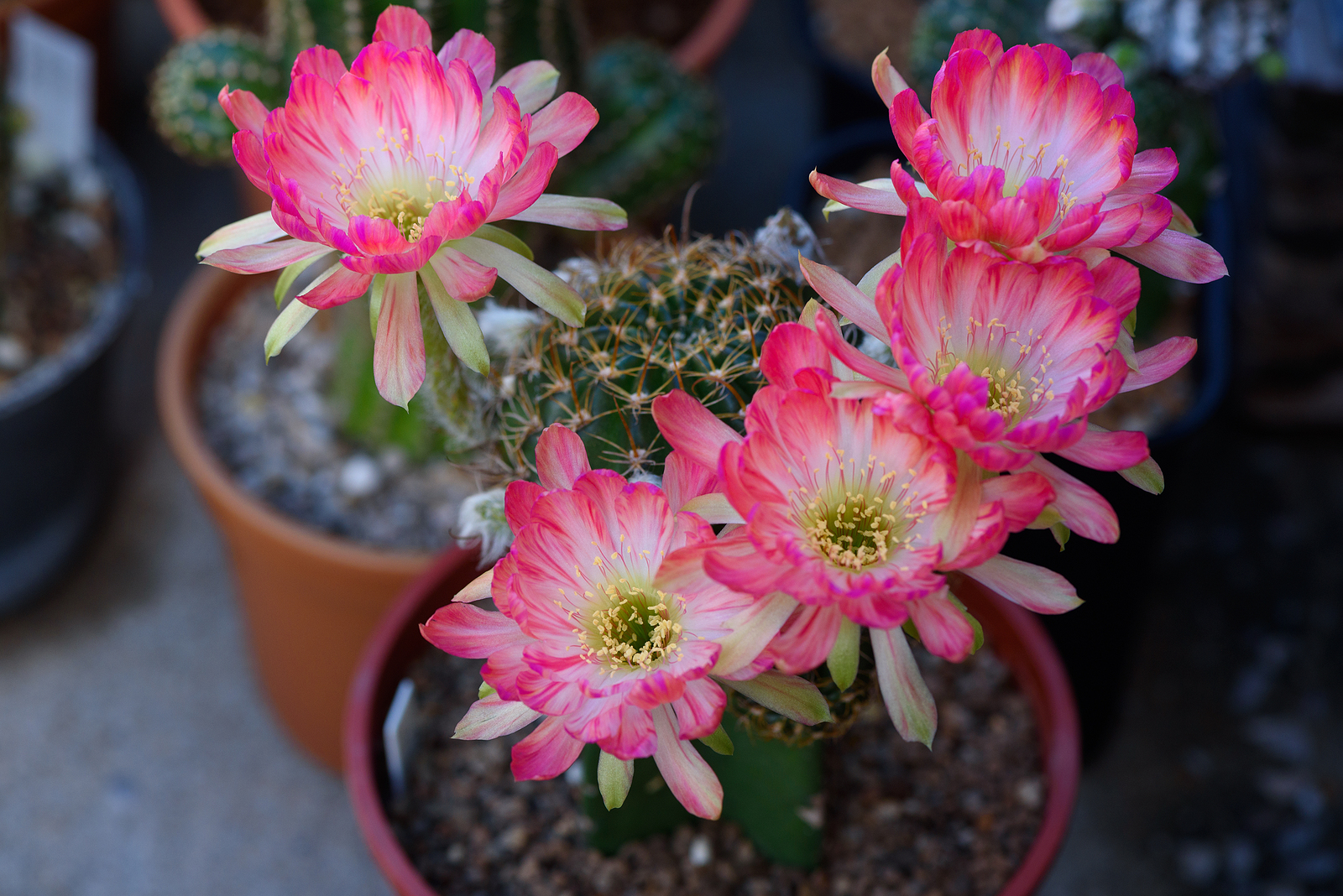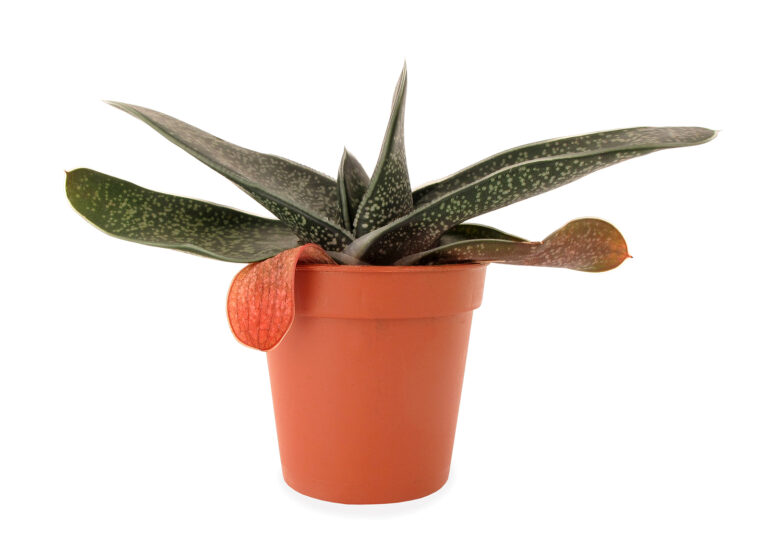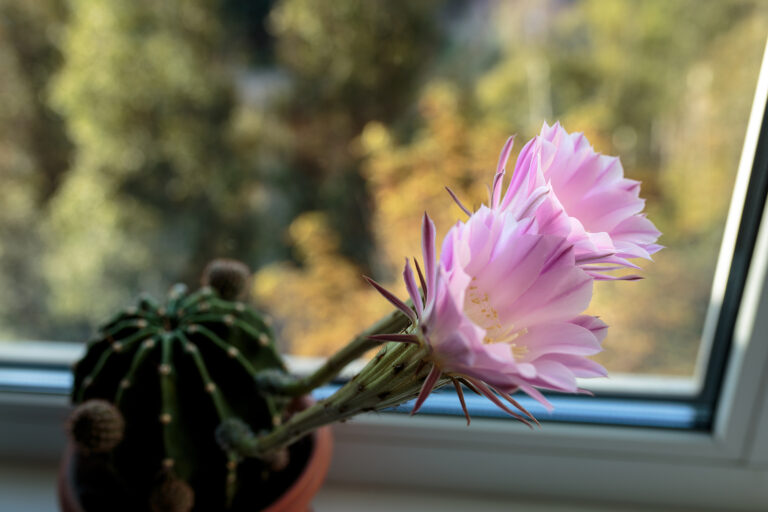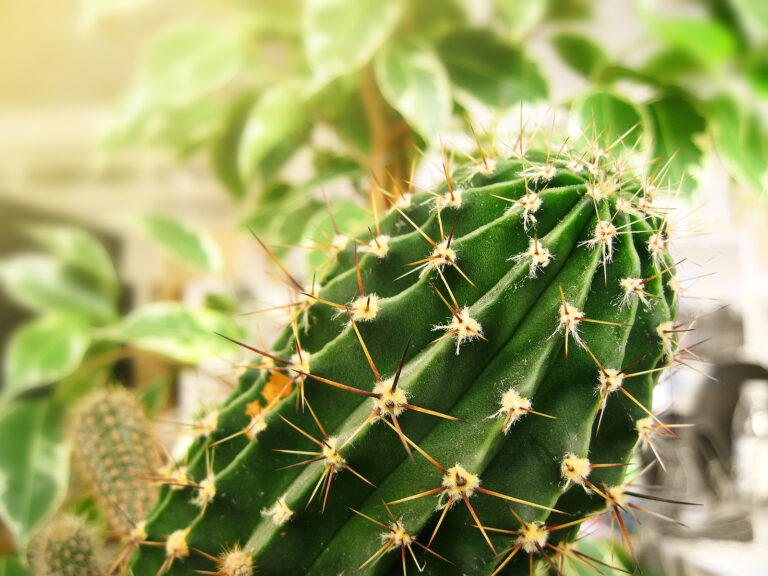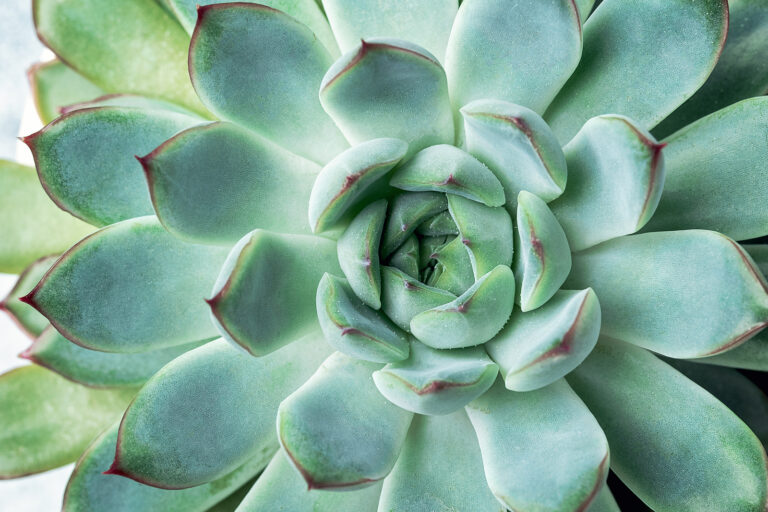Cacti and Succulent Care
The care given cacti and succulents will determine growth and flowering. The successful cultivation of cacti and succulents is largely determined by the materials used and the ability to modify care to take the best advantage of the growing conditions at hand.
Growing conditions whether indoors or outdoors will never be perfect. The grower’s ability to adapt to changing growing conditions and seasons will greatly influence how well plants thrive.
Here are important care considerations and suggestions for growing cacti and succulents.
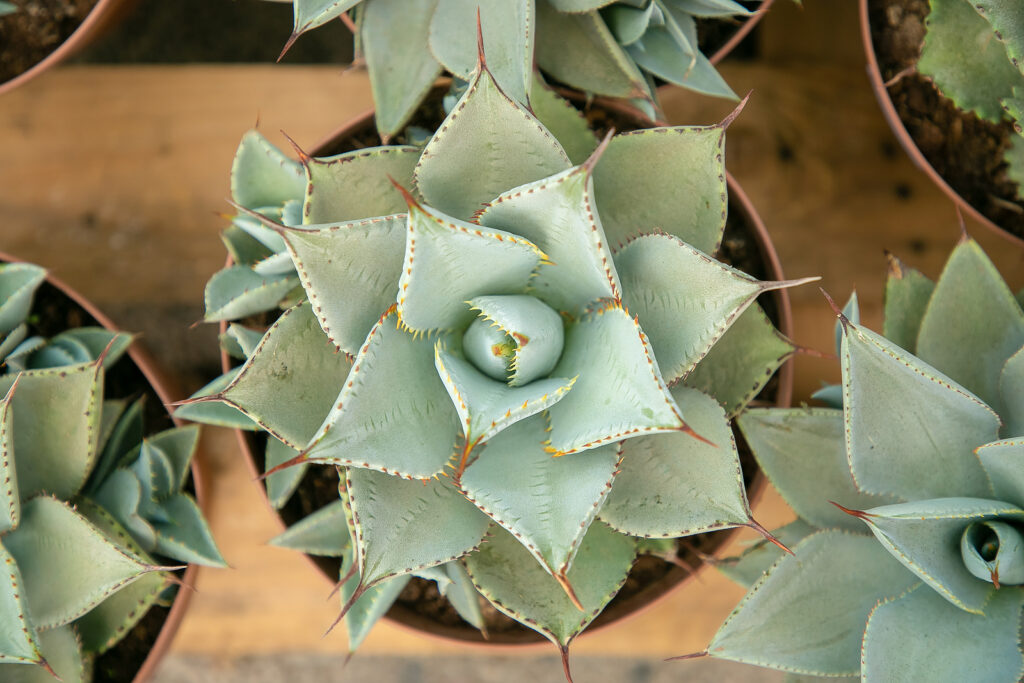
Light
- Light influences the growth and flowering of cacti and succulents. Light helps plants develop more intense color. Light requirements of cacti and succulents vary. Learn what light the plants you are growing require.
- All cacti and succulents like light and sun during their growth periods. Light needs will vary by species.
- Growing cacti and succulents indoors indirect sun or bright light is generally best.
- Young plants and tender plants such as Rebutias and Epiphyllus should be protected fro direct sunlight to avoid burning their outer skin.
- Potted plants growing indoors sould be turned regularly so that parts of the plant receive an equal amount of light. The exception is tender plants that are about to bloom; a change in light could cause buds to drop.
- Cacti and succulents to be grown outdoors should be suited for the loal climatic conditions. Check with a local nursery or the cooperative extension for species that can be grown outdoors in your area. If you are unsure, grow the plants in containers for awhile so that they can be move and protecte if necessary.
- Species that want full sun: Very hairy, heavily spined, and white-ringed species want full sun or light in summer. In spring, they must be protected from midday sun as they adjust to increased daylight.
- Species that want light, but not full sun: Leaf cactus, Christmas and Easter cacti, Gasteria, Haworthis, Echinopsis, Gymnocalycium, green Mammillaria, and Cereus want it less sunny, but very light.
- Species that want half shade: Leaf cacti including Epiphyllum, Nopalxochia, Rhipsalidopsis, and Schlumbergera species, like half-light or half shady in the summer; they also want an evenly humid, warm location.
- Short-day species need 4 to 6 weeks of short light and long dark periods in autumn: Kalanchoe blossfeldiana, and the Christmas cactus, Schlumbergera species, need short light for 4 to 6 weeks and a dark period in the autumn in order to be able to flower.
- Long-day species need long daily light periods and short dark periods: Sedum species is a long-day species
- Light can be enhanced on dark days during the winter months with fluorescen or special grow lights. Plain fluorescent lights can supply sufficient light for plant growth. Several fluorescent tubes placed side by side are best; this will help distribute the light evenly over plants. For best effect, fluorescetn lights should be mounted 4 to 12 inches (10-30cm) above the plants. Lights should be placed on a timer.
- Under artificial lights plants will grow all year. However, most cacti and succulents want a rest period each year. To grow cacti and succulents successfully under artificial light it is important to know the needs of each plant and allow for proper rest times each year.
- If a plant does not flourish or fails to flower, the light may be too low or insufficient.
- If the skin of a cactus or succulent takes on a bleached appearance, the sunlight or light may be too intense. A bleached papery looking skin may be suffering sunburn which can cause a permanent scar.
Air and temperature
- All cacti and succulents want fresh, clean air.
- Plants should be out of a draft or protected from a prevailing breeze.
- Temperatures in the 70°s and 80°s Fahrenheit are best both indoors and out.
- When the lowest temperature of the day exceeds 80° to 90℉ (27°-32℃) many succulents and some cacti will go dormant. Their stomates will remain shut; slow watering in this situation.
- Rooms with temperatures between 86° to 95℉ (30°-35℃) should be aired out so that dry heat does not accumulate.
- Plants on a cool windowsill should be warmed with a heating mat from below.
- Succulents and cacti from foggy deserts between the coasts and high mountains should be sprinkled or misted regularly especially on warm days. Mist with soft water at room temperature. Plants should naturally dry before nightfall.
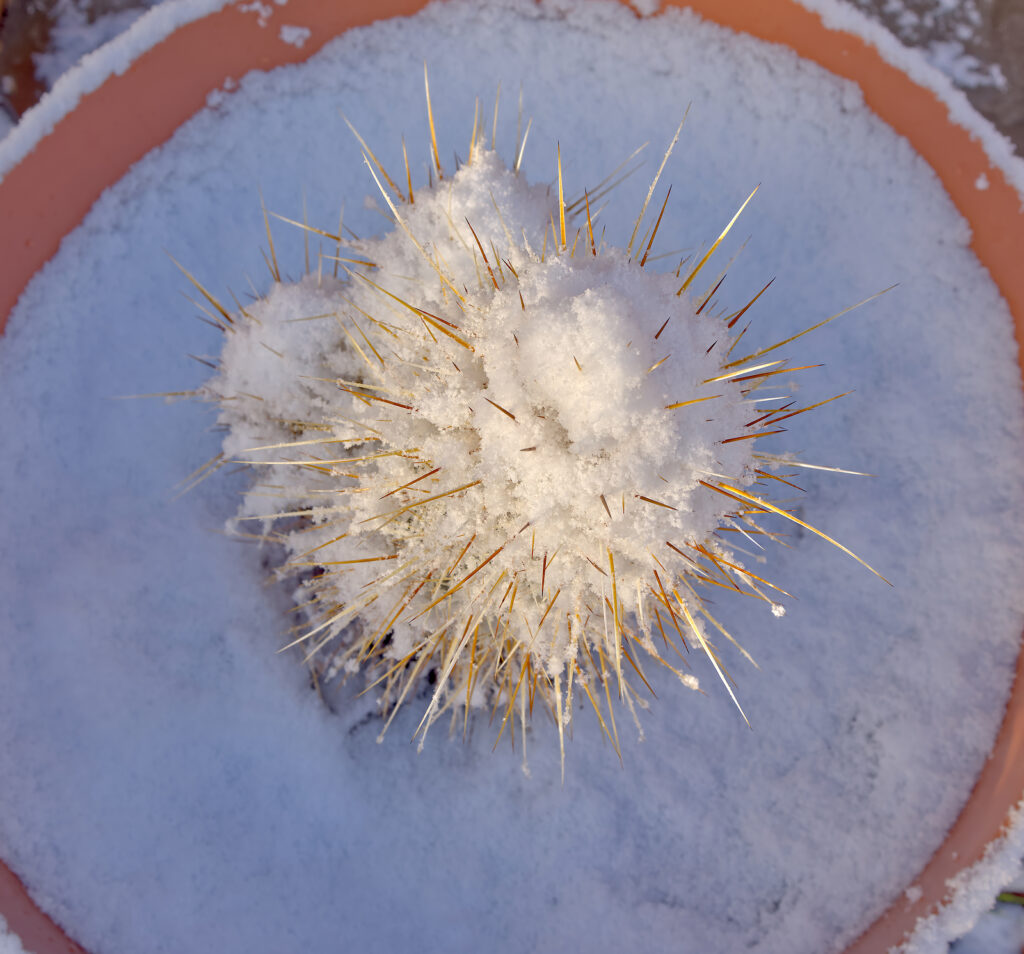
Winter rest period
- Generally, cacti want a winter rest period. This is a time when the plants are dormant. Dormancy is natural and essential for plant health.
- Winter cacti should be kept at a temperature not greater than 41° to 46℉ (5° to 8℃); they should be kept dry. Keep Euphorbia milii, Pilosocereus, Haageocerus, Melocactus, Disocactus, and some Optunia warmer than the temperatures above. Keep Echinocereus, Echinopsis, Lobivia, most Optunia, and Rebutia cooler than the temperatures above.
- Succulents should be kept at a temperature no more than 50° to 54℉ (10° to 12℃); they should be kept on the dry side. Allow the soil to dry between waterings
- Some genera such as Lobivia, Rebutia, or Notocactus prefer darker, not lighter, locations in winter.
- Fresh growth is an indication a plant is no longer dormant. Dormancy can last from one to several months.
- Cacti and succulents should be gradually introduced to increased or stronger light in the spring.
Location
- Check with a local nursery, cooperative extension, of Master Gardner group for the hardiness of cacti and succulents–that is which plants can withstand outdoor winter conditions where you live.
- Indoors cacti and succulents will do best in the light at a windowsill, but not direct sunlight in the afternoon. A window facing southwest or southeast should be suitably well lighted for cacti and succulents.
- Light 39 inches (1m) from the window will be 50 to 80 percent less intense than light directly at the widow. At 72 inches from a window, the light will be 75 to 90 percent less intense.
- Plants in chilly windowsills can be warmed if they are set beneath aluminum foil or heating mats. Plants can be protected from nighttime chill if curtains or blinds are drawn.
- Plants should not be placed in a draft or prevailing wind.
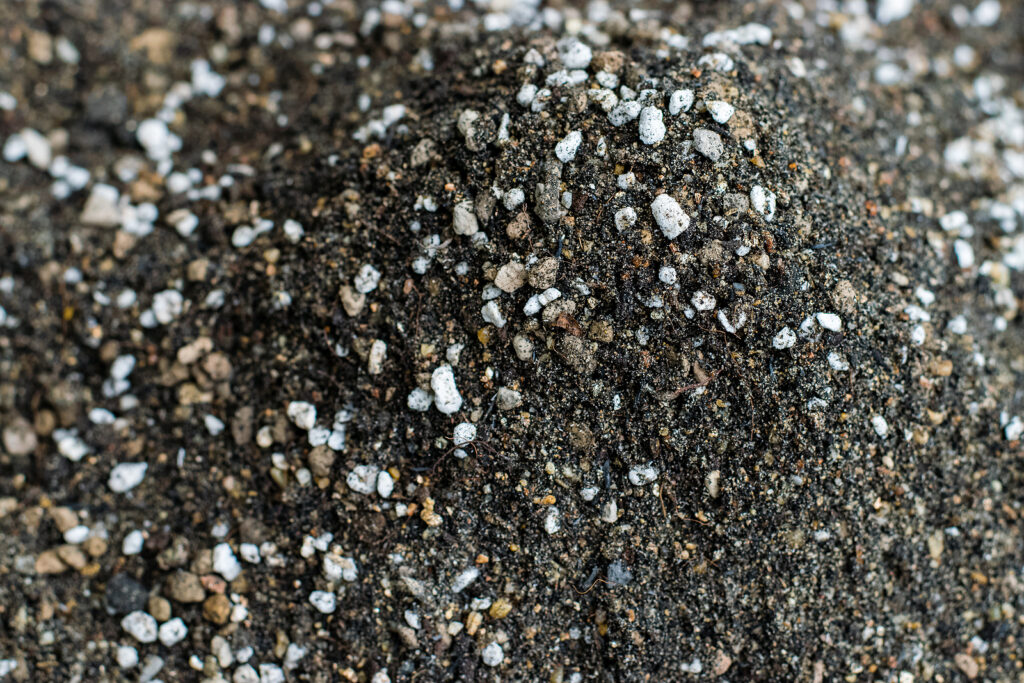
Soil
- Cacti and succulents require good, nutrious soil. The soil should be loose and well aerated even when wet.
- Cacti and most succulents prefer soil that is porous and generally free of humus, but there are exceptions. Epiphytic cacti and some succulents such as Crassulaceae want additional humus or peat. A commercial cactus or succulent potting mix is often the easiest and best course.
- If you want to mix your own soil, use not-to-fine clean-washed sand with loam or clay with additional particles of pumice stone, lava grit, charcoal, or perlite mixed in.
- Here are do-it-yourself soil mixes: combine equal parts of loose soil or potting mix, leaf mold, and coarse sand. For cacti, add more sand and more fine gravel to the mix. For tree-dwelling Epiphyllum and Rhipsalis combine equal parts of shredded fir bark or osmunda and loose soil or potting mix. All mixes should be thoroughly blended and have a loose texture; this will ensure the mix is fast-draining as well as moisture retentive.
- A soil pH of 5.5 to 6.9 is optimal.
- Soil should always be well-drained.
Watering
- Cacti and succulents can not live without water, however the frequency and amount is less than other plants.
- Keep cacti and succulents drier rather than wetter. Allow the soil to become almost dry between waterings. Use a moisture meter if you are unsure about the amount of moisture in the soil.
- Water most cacti and succulents according to their needs, usually about once a week.
- As a rule, water infrequently but generously. Water will run out of the bottom of a pot that has been generously watered.
- Water indoor plants with lukewarm water in the late afternoon; do not wet the foliage; plant surfaces should be dry at nightfall.
- When possible water at the edge of the pot and avoid wetting the plant body, especially waxy-ringed or white-haired species.
- Watering early in the day will allow the soil to slightly dry before nightfall and cooler temperatures.
- Small pots may dry out in a day or two; large pots can hold moisture for several days. Clay pots dry out faster than plastic or glazed pots.
- Plants in direct sun or wind need more water than those in cool, protected places.
- Cacti and succulents do not need watering in the winter, especially when temperatures fall below 50℉ (10℃).
- Soil should be well-drained and should not stay overly damp.
- Soft water low in calcium is best.
- Epiphytes benefit from an air humidity of 50 to 60 percent during the summer and 40 to 50 percent during the winter.

Fertilizing
- Succulents should be fertilized every 2 to 3 weeks from late spring to early autumn.
- Fertilize cacti and succulent only during their active growth period, spring and summer. Do not fertilize during the winter rest period.
- Use a balanced fertilizer with micronutrients that has been formulated for cacti or succulents. A higher ratio of nitrogen such as 10-5-5 will promote more growth; higher phosphorus such as 5-10-5 will promote flowering; higher potassium such as 5-5-10 will promote more disease resistance and all-around health.
- It is better to apply a quarter or half strength fertilizer solution at every other watering or week during the growing season rather a heavy feeding once a month. Too much fertilizer can cause thin, weak growth.
- It is better to use a low or light nutrient fertilizer more often than a high nutrient fertilizer less often. A weak solution of liquid 5-5-5 fertilizer will likely be sufficient.
- Organic, slow-release fertilizers are preferable to non-organic quick-release fertilizers.
- Soluble foliar or leaf fertilizers low in nitrogen can be used in the spring; wet the soil in advance of using a soluble fertilizer.
- Stop fertilizing plants in late summer or if they are diseased. Fertilizer applied late in the growing season will result in tender growth which will not survive cooler autumn and winter temperatures.
- To keep plants intentionally small, reduce nutrients to once a month at most.
Repotting
- Fast-growing succulents should be repotted once a year.
- Cacti should be repotted every 2 to 3 years.
- Older plants need repotting less often than younger plants; older plants are less tolerant of damage to the roots.
- Moldy or crusty soil should be removed and replaced with fresh soil.
- Fertilizing plants is not a substitute for repotting.
- When repotting, the new pot should be 3/4 inch (2m) larger than the plant’s diameter in each dimension–wide and deep.
- When repotting into a used pot or container, scrub the container well with hot water (add 1/2 cup household bleach per gallon of water) and a brush. This will eliminate any pests or disease.
- Soak porous pots in water before repotting; a dry pot will absorb moisture from the potting mix.
- Make sure the soil mix is not too wet; excessive moisture can cause roots to rot.
- When repotting, create a small mound of soil in the container to center the plant. Fill in soil around the roots until the container is almost full, leaving root for water. Settle the soil by rapping the bottom of the pot gently; do not pack the soil too tightly.
- Repot plants to the “soil level” makr on the plant; try to avoid repotting deeper than the mark. If you are unsure of the soil level, add a top layer of light gravel.
- For species sensitive to excessive moisture. place a small top layer of gravel on the soil; this will keep the base of the plant from coming in contact with the potting soil.
- When repotting cacti, avoid contact with the spines by handling or wrapping plants with folded newspaper; also use leather gloves.
- Do not water newly potted plants immediately; allow plants to dry and then water sparingly for the first few weeks. This will allow disturbed and broken roots to heal.

Containers
- A container should provide good drained so that the soil is kept loose and well aerated. A container must have drainage holes.
- Terra cotta (red clay) pot are relatively inexpensive and available in many sizes. Because they are made of a porous material, plants will dry out faster.
- Glazed pots are not porous. Plants must be watered with more caution because moisture cannot escape through the pot’s sides.
- Plastic pts and inexpensive and lightweight. Plastic is well suited for hanging plants. Plastic pots are not porous so it is important to avoid overwatering. Plastic pots may tip over if the plant is large.
- Choose a pot that will not tip over as a result of the height or weight of the plant.
- Wooden tubs should be made with environmentally friendly chemicals that do not damage the plant.
- Consider the size of the plant when choosing a pot. Choose a pot 1 or 2 inches (2.5-5cm) wider than the diameter of the plant. For vertical plants such as Torch cacti, Euphorbias, and Aloes, choose a pot half as wide as the plant is tall.
- Do not choose a pot too large for the plant, unused soil tends to become waterlogged.
- Do not choose a pot small; small pots, especially under 4 inches, tend to dry out rapidly.
Plant problems
- Cacti and succulents are free from most pests and diseases.
- Well-cared-for plants are seldom attacked by pests and diseases.
- When problems occur, check the plant’s growing conditions first. Moving a plant out of a draft or into better light may fix the problem.
- Plants too dry or too wet or too cold or too hot will show signs of stress or poor growth. Check growing conditions first.
- Check leaf joints, flower buds, and the soil if you suspect insects are active. A mix of water and dish soap will eradicate many insect pest infestations.
- When using insecticides, always follow directions.
Related articles:

